All the Beauty and the Bloodshed by Laura Poitras in Oscars race
Oscar-winning director Laura Poitras and photographer Nan Goldin go to the front line of the opioid crisis.
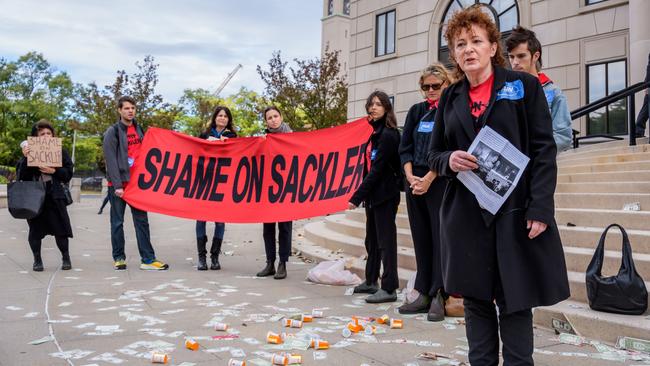
For a while it seemed that Laura Poitras’s All the Beauty and the Bloodshed would become the first documentary to earn an Academy Award nomination for best film.
The real-life story about photographer and activist Nan Goldin and her battle with the opioid-pushing Sackler family had already fared well on the festival circuit. It was only the second documentary to win the coveted Golden Lion in the 79-year history of the Venice film festival, and was the only film to screen at the Telluride, Toronto and New York festivals. Maybe Oscar voters figured it had had enough play.
Still, there are no women nominated for best director in next month’s Academy Awards, and Sarah Polley’s Women Talking is the only female-directed movie in the running for best film.
In any case Poitras, whose 2014 film Citizenfour about Edward Snowden won the Oscar for best documentary, has again been nominated in that category. She also made the 2016 documentary Risk, about Australian WikiLeaks founder Julian Assange.
“Every film I make is kind of unique,” says Poitras, 59.
“I tend to make films about individuals who are creating change, so that through the individual we understand something bigger about society, oftentimes political, oftentimes about resistance. But it’s always organic. I go in with one idea and then it changes and I go down paths I don’t expect.”
For more than a year before Poitras came on board, Goldin had been filming and documenting the museum protests of her advocacy group PAIN (Prescription Addiction Intervention Now). She formed the group in 2017, inspired by ACT UP and its protests during the AIDS epidemic, after she became addicted to OxyContin, manufactured by the Sackler family’s Purdue Pharma.
Art galleries including the Metropolitan Museum of Art and the Guggenheim in New York, and the Louvre in Paris, had accepted sponsorship money from the Sackler family. Goldin led protests against those museums to push them to remove the Sackler name and was looking for a filmmaker to join the project.
“We had a chance meeting,” says Poitras, who had met Goldin on many occasions and was acquainted with her highly personal work.
“Originally her interest was in the Sackler story, and I’d been following how this small group of people were causing such headaches for this billionaire family.”
No members of the Sackler family have been charged with crimes but Purdue Pharma has pleaded guilty to criminal charges.
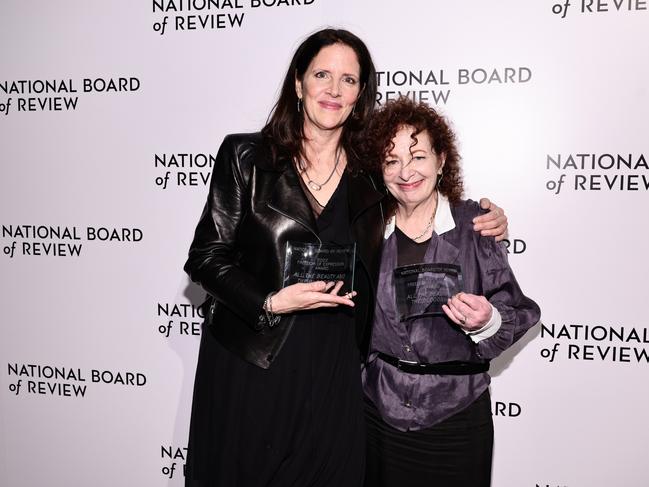
In her beautifully constructed film that shuttles through numerous narratives and histories, Poitras draws parallels between the opioid crisis and the AIDS epidemic and tells the story through Goldin’s experience.
“In our first meeting Nan told me about an exhibition she had organised in 1989, called Witnesses: Against Our Vanishing, which was dealing with the AIDS crisis,” Poitras says.
“I realised this was an artist who was using her influence to talk about the failures of society that were happening in that moment, and that there was a connection between this moment in the ’80s and what’s happening today with the overdose crisis. So I knew that this story was going to have to converge with the extraordinary exhibition she had done.
“And then of course Nan’s work is groundbreaking in terms of storytelling and visual language and bravery and representation. So that was always going to have to be part of the film.”
Goldin was up for it, even though she was surprised at first.
“I knew Laura predominantly as a political documentarian and my worry was that I don’t have any state secrets to share and that I wasn’t important enough for this,” Goldin, 69, says with a chuckle. “She didn’t want to make an artist bio.
“I was making work for a show in London (Sirens at the Marian Goodman Gallery in 2019) and she actually started editing my work a little bit. I realised she and I are the same. We can’t watch an artist make work without giving our opinion. So that was really powerful.
“She had great feedback. I agreed to trust her more and more. Our sessions together were therapeutic. I reveal many deep, painful things (in the film) because she had a way to ask me. I guess I never thought about who was going to see them.”
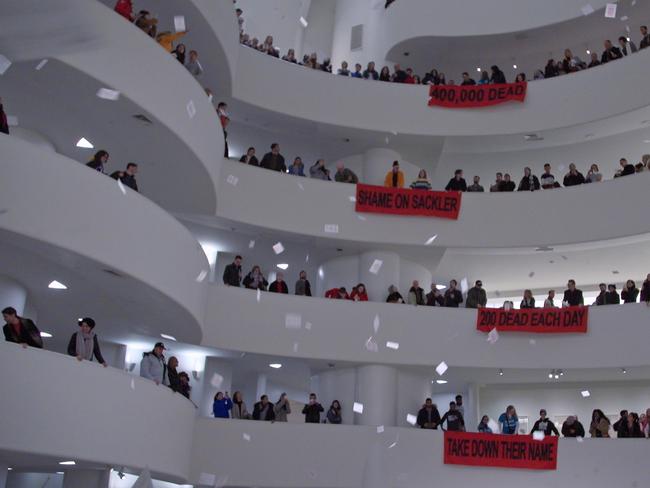
Poitras commends Goldin for her “willingness to really talk about things that most people don’t talk about, things that are kept private in this society that destroy people. I think this is one of the core issues in the film. I was so moved by how she spoke about her work and her life. Her raw honesty is very similar to her photographs.”
Poitras traces Goldin’s upbringing in a dysfunctional family with repressive parents.
Her mother was in denial regarding the suicide of Goldin’s beloved lesbian elder sister, Barbara, whose story the artist depicted in her 2004 slide show, Sisters, Saints and Sibyls; and about Goldin’s life on the fringes in Boston’s gay nightclubs and in Manhattan during the 1970s.
Photographing her LBGTQ friends proved a tonic to her grief over her sister’s death. Goldin, who is bisexual, also worked in a strip club in New Jersey and reveals for the first time how she became a sex worker in a New York brothel to pay for film stock.
In The Ballad of Sexual Dependency, Goldin’s 1985 slide show and 1986 book, she included self-portraits that showed her body scarred and bruised from a brutal beating by her ex-boyfriend. “All my work is about fighting stigma, since the beginning, starting with different forms of sexuality and gender choices in the early ’70s, about relationships and the difficulty in maintaining relationships between men and women,” Goldin says.
“When I was battered and I showed my work around the world, women would come up to me and say that ‘I photographed myself after I was battered, like you’, and they were able to talk about things they’ve never talked about to anyone. That’s my goal.”
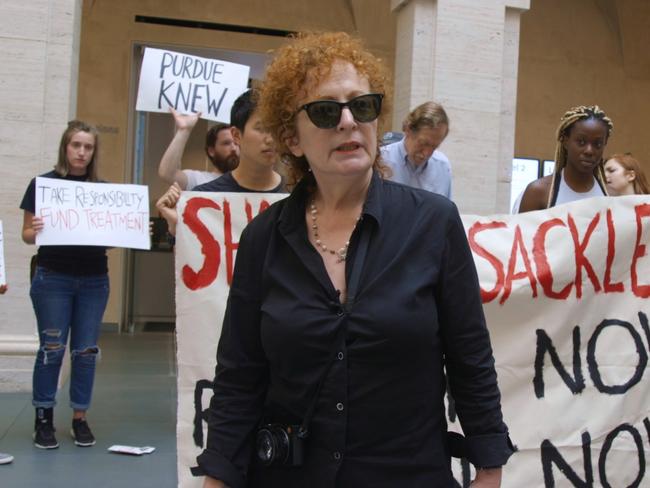
Drug use has its stigmas, too. All the Beauty and the Bloodshed explains that, before OxyContin, the Sacklers had promoted the use of Valium; ads from the period targeted women and their anxieties.
The overprescription of OxyContin and the powerful synthetic opioid fentanyl has resulted in an epidemic. Opioid overdose deaths soared to a record level during the Covid-19 pandemic, and Poitras says the overall death toll in the US alone is more than 500,000 and rising.
Her film shows how PAIN has been successful in having major galleries relinquish Sackler sponsorship and naming rights.
In 2019 Purdue Pharma filed for bankruptcy in the face of thousands of lawsuits accusing it and members of the Sackler family of fuelling the opioid epidemic.
The company pleaded guilty to misbranding and fraud charges related to its marketing of OxyContin in 2007 and 2020, yet members of the Sackler family have denied any wrongdoing.
Last year the family reached a deal to pay up to $US6bn to resolve widespread litigation, bringing the OxyContin maker closer to exiting bankruptcy.
“There’s something about Nan’s willingness to say ‘F..k you’ to the establishment and taking on power,” Poitras says.
“She’s like: ‘I couldn’t not do it.’ She lived through the loss of her community through AIDS and it was happening again.
“And there were a lot of risks. I mean, the Sacklers are a billionaire family and they’re ruthless … So they were very incentivised to not be happy with what these guys were doing.
“But Nan has used her influence in the art world to demand accountability and to expose this kind of really toxic philanthropy.”
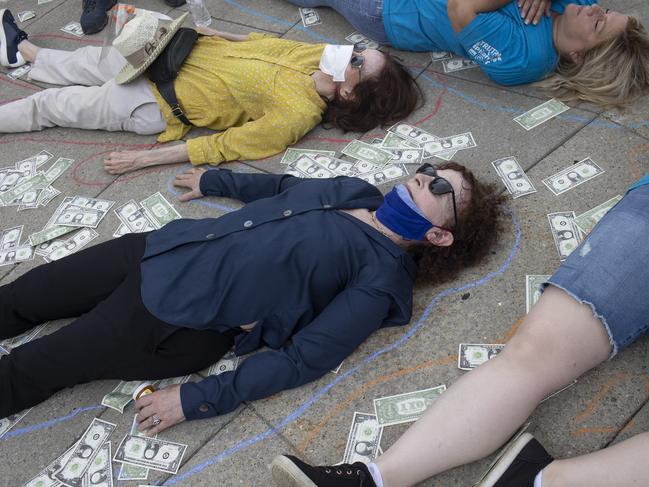
Poitras recalls that her dealings with whistleblower Snowden, who exposed widespread surveillance by the US National Security Agency, were vastly different. “I didn’t have a lot of access to Edward Snowden’s inner life, to where he was emotionally, and that’s OK, too. I’m totally proud of that work.”
Still, making Citizenfour came with risk.
“I really thought when I met him that the story would probably end with him being in jail and maybe me too,” Poitras says. “It was very touch and go for a really long time.”
Did the publicity surrounding her Oscar win give her any protection? It was only after receiving some awards for Citizenfour that she and journalist Glenn Greenwald – who both appear in the film – were told by their lawyers that they could “maybe” travel back to the US.
“It’s much harder to arrest American journalists once they’ve gotten awards,” she says.
For All the Beauty and the Bloodshed, Poitras re-teamed with Participant Media, which she says took a lot of risks, as they had on Citizenfour.
“We were like: ‘You know, the Sacklers might be suing you. Are you ready? Call up your lawyers!’ But I’m very fortunate because I feel like in the post-9/11 era there was a complete collapse of investigative journalism in the US. So when I was working at that time, I definitely felt that the film documentary community stepped up, and not just for my work but for other people like Alex Gibney. A lot of people did really good investigative work, then the bottom fell out of it. Then Julian Assange woke them up again. He was like, ‘Oh, no, the US really is involved in war crimes.’
“It’s the role of journalists to expose them.”
All the Beauty and the Bloodshed opens in cinemas on March 9. It also screens at the Queerscreen Festival, Sydney, February 18.


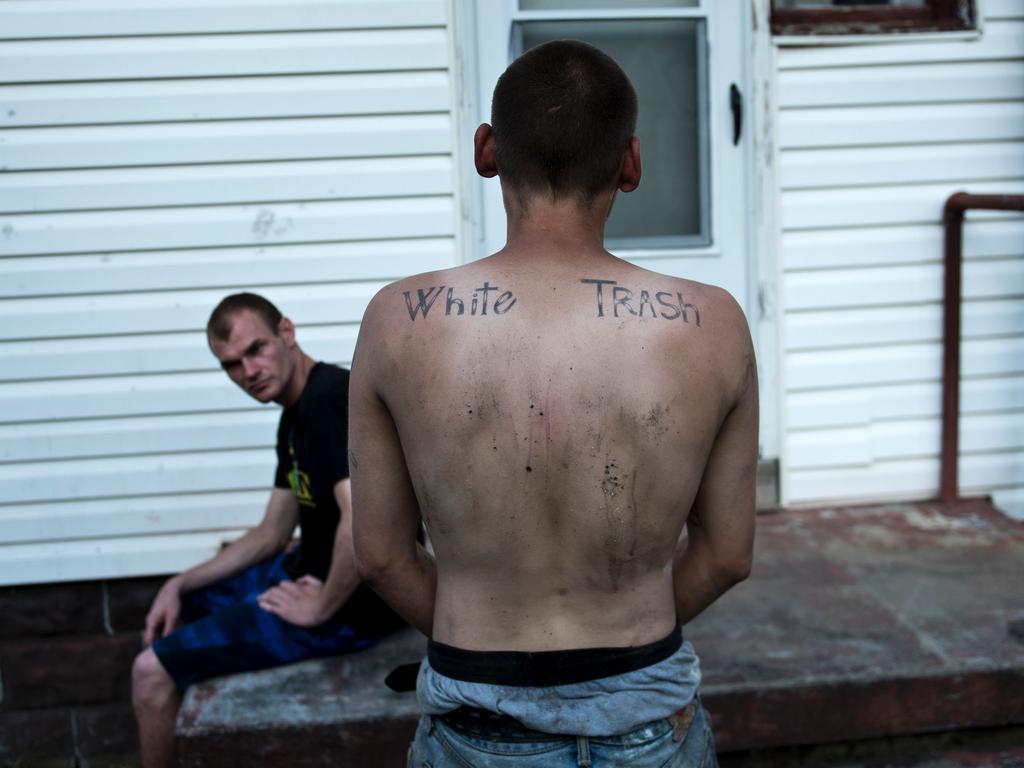
To join the conversation, please log in. Don't have an account? Register
Join the conversation, you are commenting as Logout